Chi Cephalocereus, Chi Echinocactus, Chi Haworthia, Chi Mammillaria, Chi Opuntia, Chi Sansevieria - Chi Lưỡi Hổ, Ebook The Kew Gardener's Guide to: Growing houseplant - Kay Maguire
[Ebook Việt Hoá] The Kew Gardener’s Guide to: Growing houseplant: PROJECT 5: DESERT ISLANDS
- Nguồn: Ebook The Kew Gardener’s Guide to: Growing houseplant – Kay Maguire
- Biên tập: Dũng Cá Xinh
- Dịch: Happy Nguyen
English
PROJECT 5: Desert islands
All cacti and succulents have strong individual textures, from fleshy leaves to spiky stems, and a great way to show off their many different shapes and sizes is to group them together. To reinforce the relationship between them and to draw the eye to the individual plants rather than distract from them, select pots that are exactly the same or very similar. Here, I have chosen simple, white pots as a contrast to the plants and to highlight the variations in their textures and form, and have then drawn them all together by standing them within a large stone platter. Each pot has also been topdressed with crushed oyster shell, which sets off the plants and helps to keep moisture away from their stems. Place the display in a sunny spot.
Water your desert plants only when their compost is dry, taking care not to splash the plants. Leave them to dry out completely between mid-autumn and early spring.
PLANTS FOR A DESERT DISPLAY
- African spear (Sansevieria cylindrica)
- Bunny-ears cactus (Opuntia microdasys)
- Golden barrel cactus (Echinocactus grusonii)
- Old man cactus (Cephalocereus senilis)
- Pincushion cactus (Mammillaria species)
- Sansevieria kirkii ‘Silver Blue’
- Zebra cactus (Haworthia fasciata)
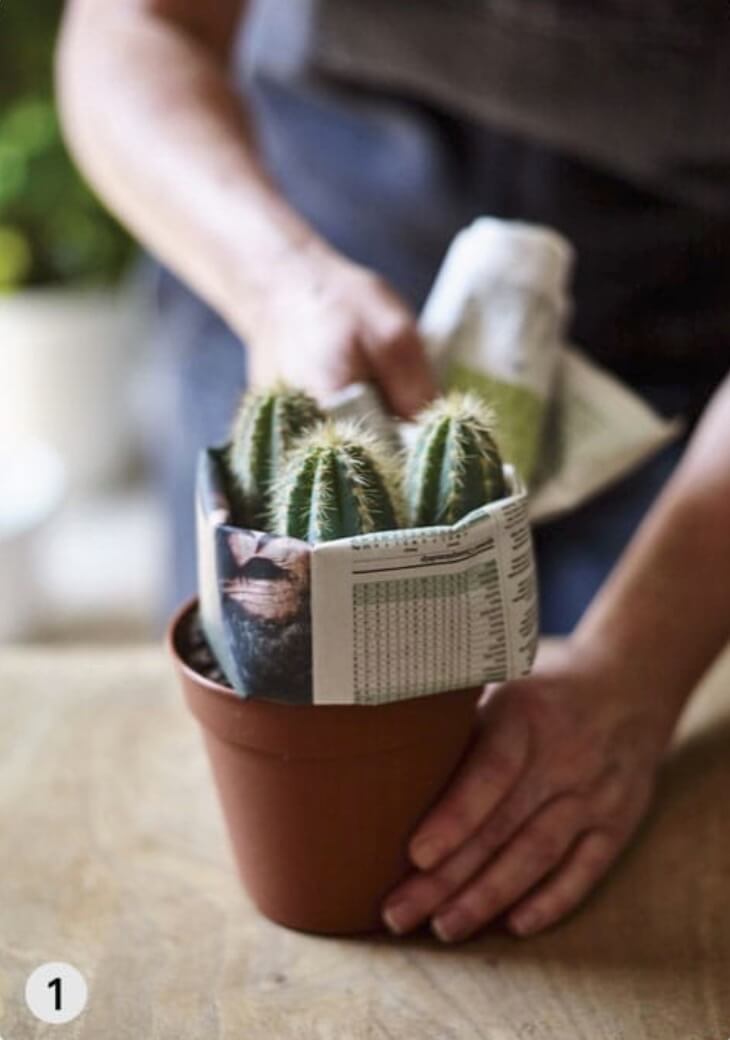
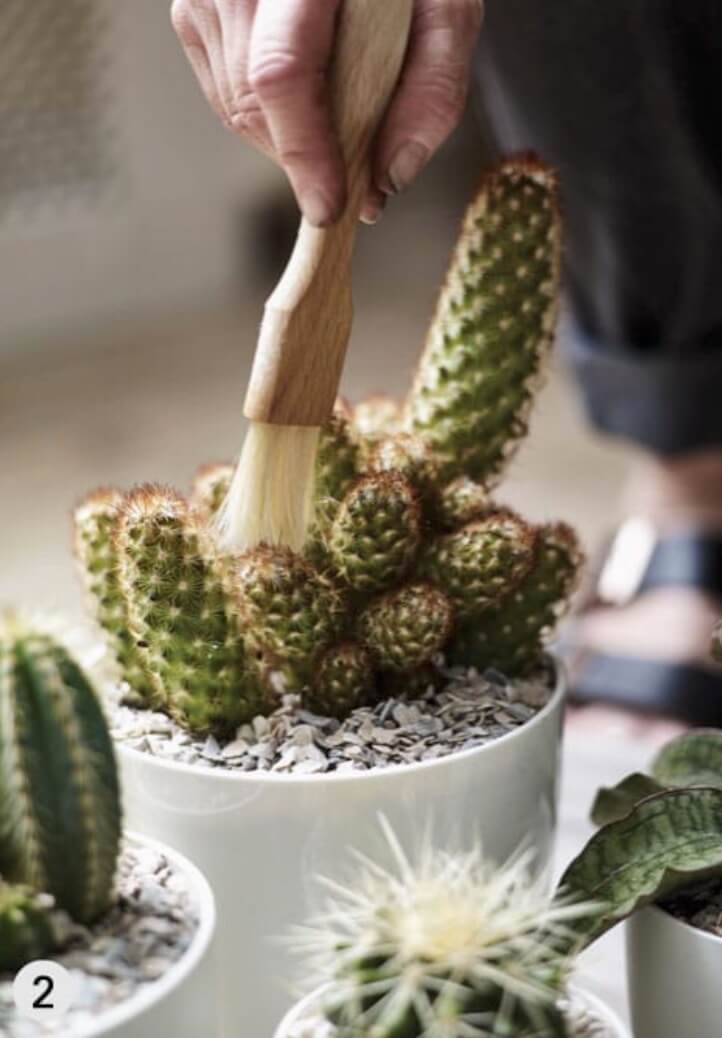
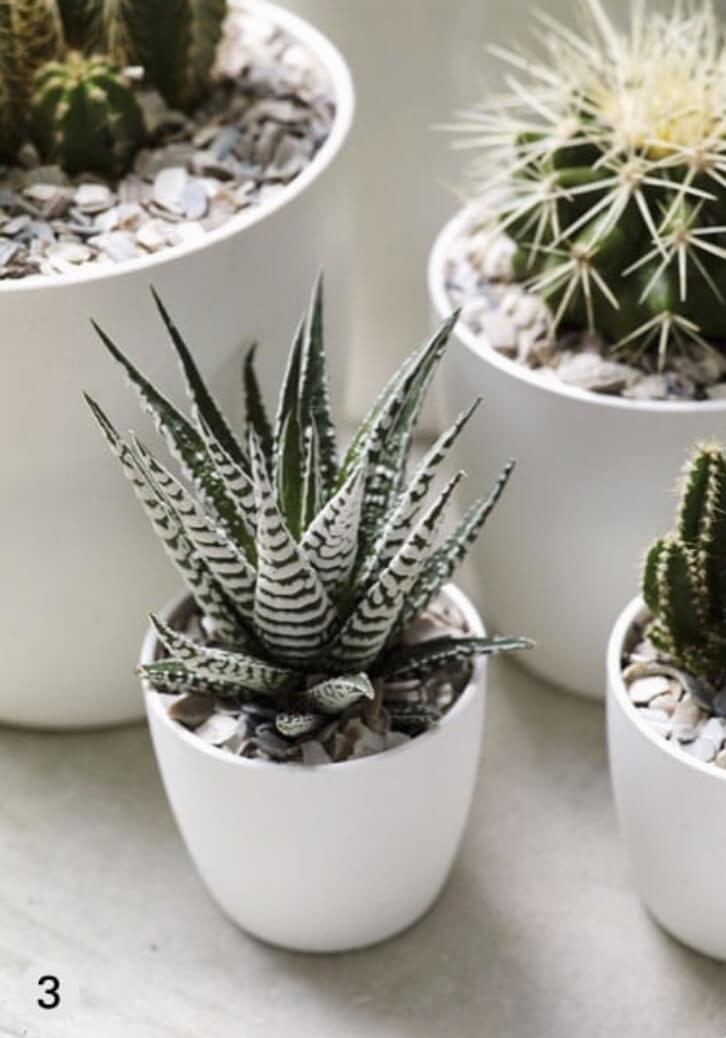
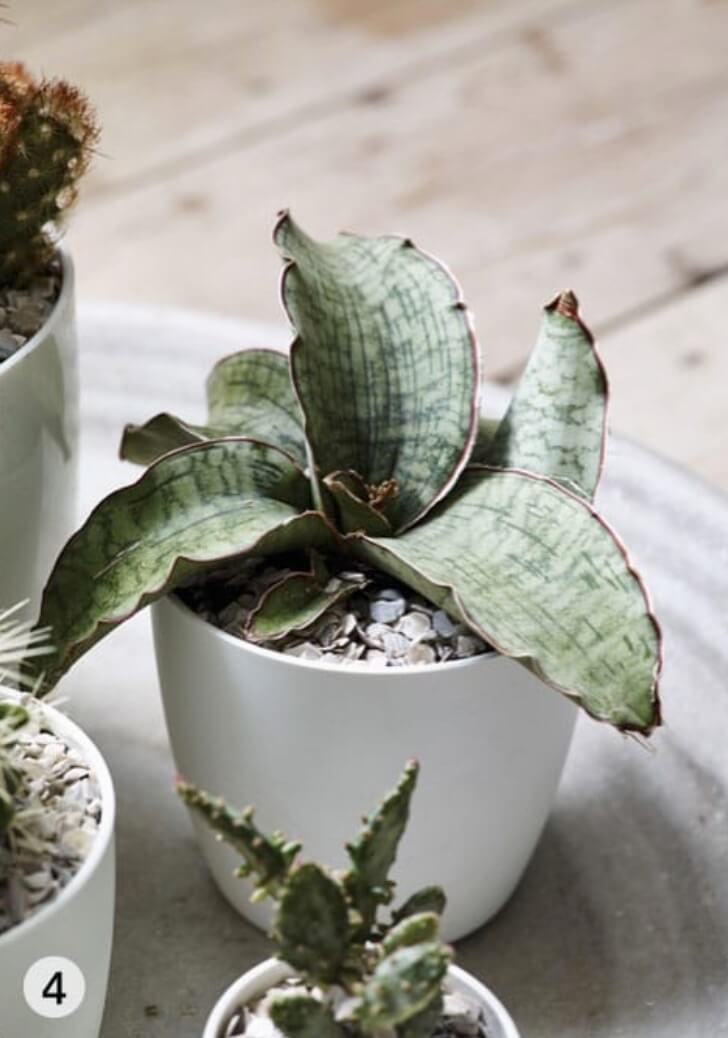
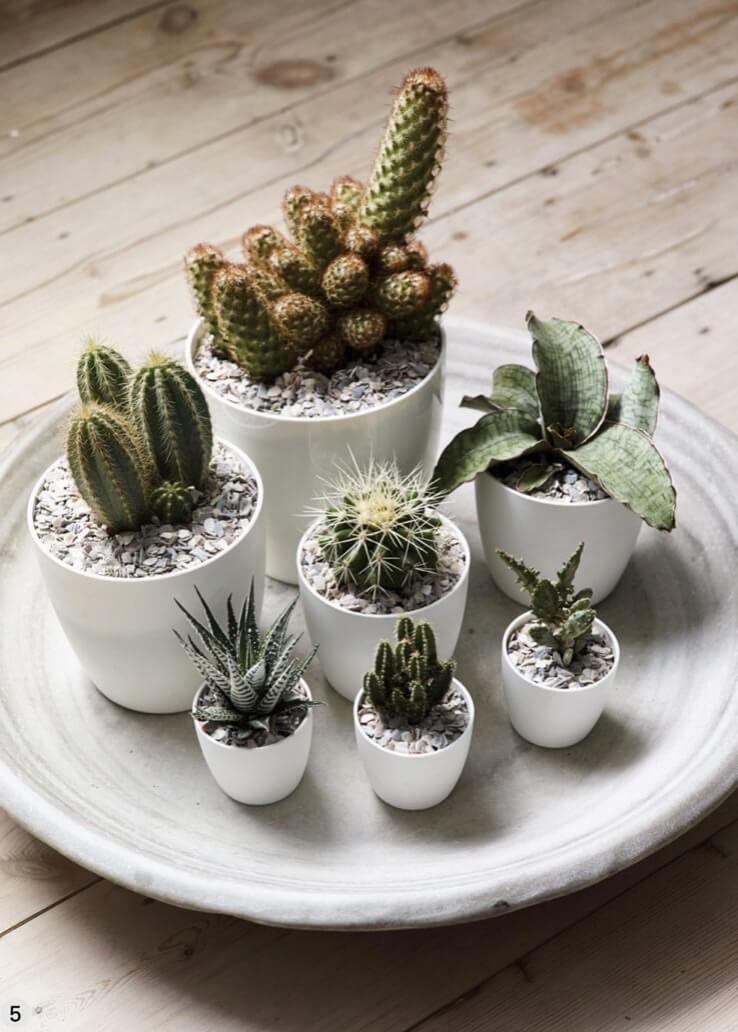
Tiếng Việt
Chặng 5: Đảo sa mạc
Tất cả các loài xương rồng và loài cây mọng nước đều có “cá tính” riêng biệt mạnh mẽ, từ những chiếc lá nhiều thịt đến những thân gai nhọn, và nhiều hình dạng và kích thước khác nhau. Để tạo mối quan hệ khăng khít giữa chúng và để thu hút sự chú ý của người nhìn, bạn nên đặt chúng gần nhau thay vì phân tán chúng. Hãy chọn những chậu cây có cùng hình dạng và kích cỡ. Ở đây, tôi đã chọn những chiếc chậu đơn giản, màu trắng như một sự tương phản với các loại cây và để làm nổi bật các cá thể. Sau đó, nhóm chúng lại với nhau bằng cách đặt chúng trong một khay trồng lớn. Mỗi chậu cũng đã được phủ một lớp vỏ hàu nghiền nát để tạo độ ẩm cho cây. Đặt khay trồng ở nơi có nắng.
Chỉ tưới nước cho những loài cây này khi phân trộn của chúng đã khô, chú ý không để nước bắn vào cây. Để chúng khô hoàn toàn giữa mùa thu và đầu mùa xuân.
Những loài cây cho một bức tranh sa mạc giả lập
- Cây Ngà Voi (Sansevieria cylindrica)
- Xương Rồng Tai Thỏ (Opuntia microdasys)
- Xương Rồng Bóng Vàng (Echinocactus grusonii)
- Xương Rồng Ông Lão (Cephalocereus senilis)
- Xương Rồng Cầu Vồng (Mammillaria species)
- Cây Sansevieria kirkii ‘Silver Blue’
- Sen Đá Móng Rồng (Haworthia fasciata)





![[Ebook Việt Hoá] The Kew Gardener’s Guide to: Growing houseplant: PROJECT 5: DESERT ISLANDS [Ebook Việt Hoá] The Kew Gardener’s Guide to: Growing houseplant: PROJECT 5: DESERT ISLANDS](https://vn1.vdrive.vn/codai.net/2021/04/01-ebook-trong-cay-trong-nha-kew-project-5-desert-islands.jpg)


